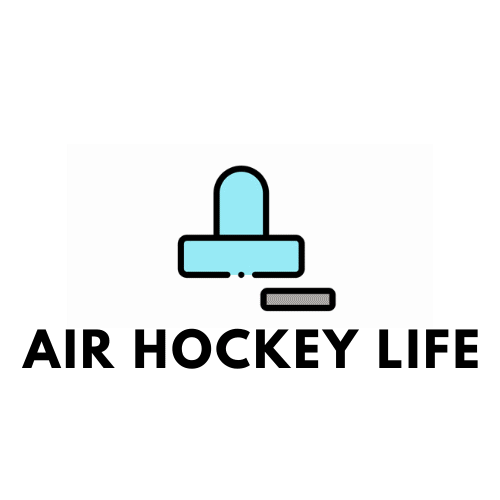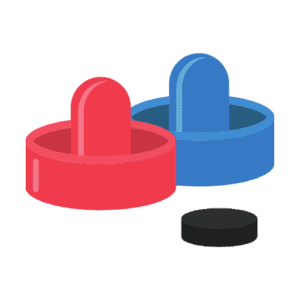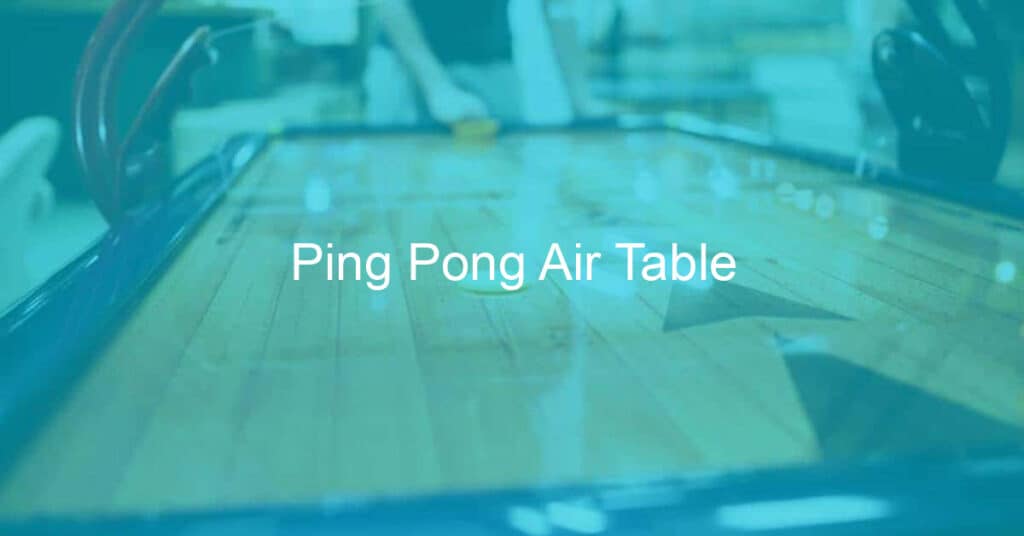Air hockey is a beloved game, often reminding us of fun times at arcades or friendly competitions at home. The key player in this game, often overlooked, is the puck. This comprehensive guide aims to educate you on everything you need to know about air hockey pucks – their history, construction, and their impact on the game. Whether you’re a professional, a hobbyist, or someone looking to purchase their first air hockey table, this in-depth exploration will enrich your understanding and appreciation of this essential game component.
The History of Air Hockey Pucks: Evolution and Importance
Air hockey was created in the 1970s by a group of Brunswick Billiards employees. The game quickly gained popularity, and along with it, the air hockey puck also evolved. Early versions were square or triangular, and players would often find their fingers stuck under them. Today’s circular puck is a result of years of refinement and experimentation. Understanding this evolution helps us appreciate the effort put into enhancing the gaming experience for everyone.
Understanding the Material Composition of Air Hockey Pucks
Air hockey pucks are typically made from a type of plastic known as Lexan polycarbonate resin. This material is chosen for its durability, lightness, and the smoothness of its surface. This allows the puck to glide swiftly and smoothly over the air cushion produced by the table, which makes the game fast-paced and exciting.
Best Air Hockey Pucks for Competitive Play
If you’re seeking to play air hockey at a competitive level, it’s crucial to choose the right puck. High-quality pucks are often heavier, with weights ranging from 42 to 46 grams. They also come in a standard size of 3.25 inches in diameter. Some top picks for competitive play include Dynamo Green Air Hockey Pucks, Gold Standard Games Pucks, and Valley-Dynamo Fluorescent Air Hockey Pucks.
DIY: Making Your Own Air Hockey Pucks
Creating your own air hockey pucks can be a fun and rewarding project. You’ll need materials like a Lexan polycarbonate sheet, a hole saw of the appropriate diameter, and fine-grit sandpaper. It’s important to ensure the puck is as smooth and uniform as possible for optimal gameplay.
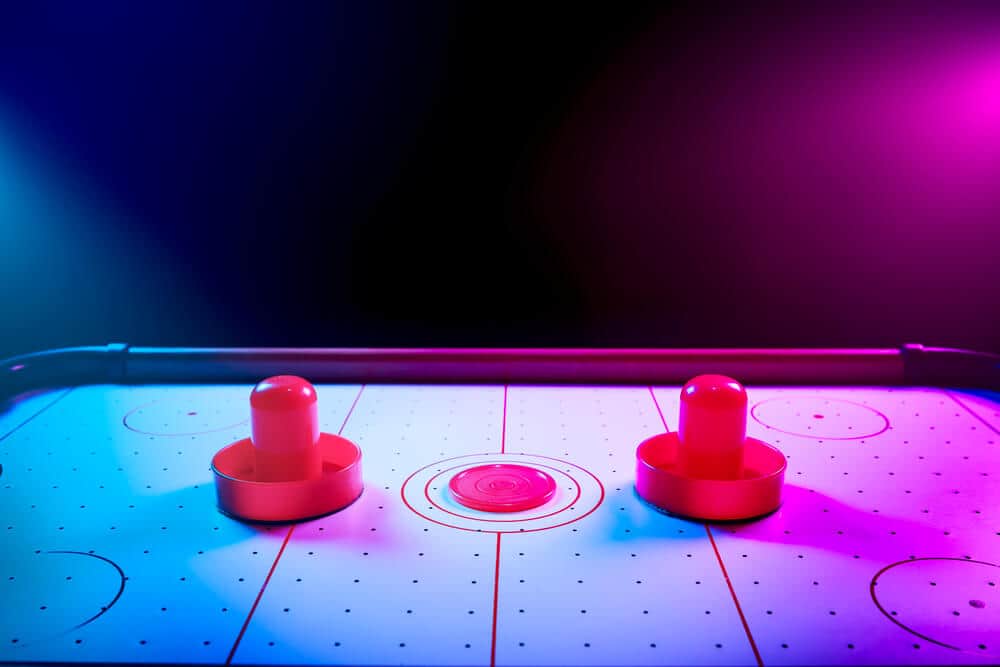
Impact of Air Hockey Puck Weight and Size on Gameplay
The weight and size of an air hockey puck significantly influence how the game is played. Heavier pucks are harder to hit, making the game slower but more strategic. On the other hand, lighter pucks can result in a faster, more reflex-oriented game. The diameter of the puck also affects gameplay. Larger pucks tend to move slower but are easier to control, while smaller ones can be quicker but harder to handle.
How to Choose the Perfect Air Hockey Puck for Your Table
Choosing the right puck for your table depends on several factors such as the size of your table, the type of blower, and your skill level. For larger, professional-grade tables, heavier and larger diameter pucks are recommended. For smaller, home tables, lighter and smaller pucks are better. Remember, the table’s blower must be strong enough to lift the puck for smooth movement.
| Table Size | Puck Diameter | Puck Weight | Suitable For |
|---|---|---|---|
| Full size (7 to 8 feet) | 3.25 inches | 40-45 grams | Adults/Professionals |
| Medium (6 feet) | 2.5 inches | 20-30 grams | Teens/Amateurs |
| Small (4 to 5 feet) | 2 inches | 10-20 grams | Children/Beginners |
Where to Buy High-Quality Air Hockey Pucks Online
Several online platforms sell high-quality air hockey pucks. Amazon and eBay have a wide range of options for different skill levels and budgets. Specialized online sports and game shops like Game Room Guys and Ozone Billiards also offer an array of choices.
Air Hockey Pucks: Standard Measurements and Regulations
Air hockey puck standards are set by the USAA (United States Air-Table-Hockey Association). For professional play, the puck must be round with a diameter of 3.25 inches and weigh between 42 and 46 grams. It should be made of Lexan polycarbonate resin, and the color should be yellow, red, or green.
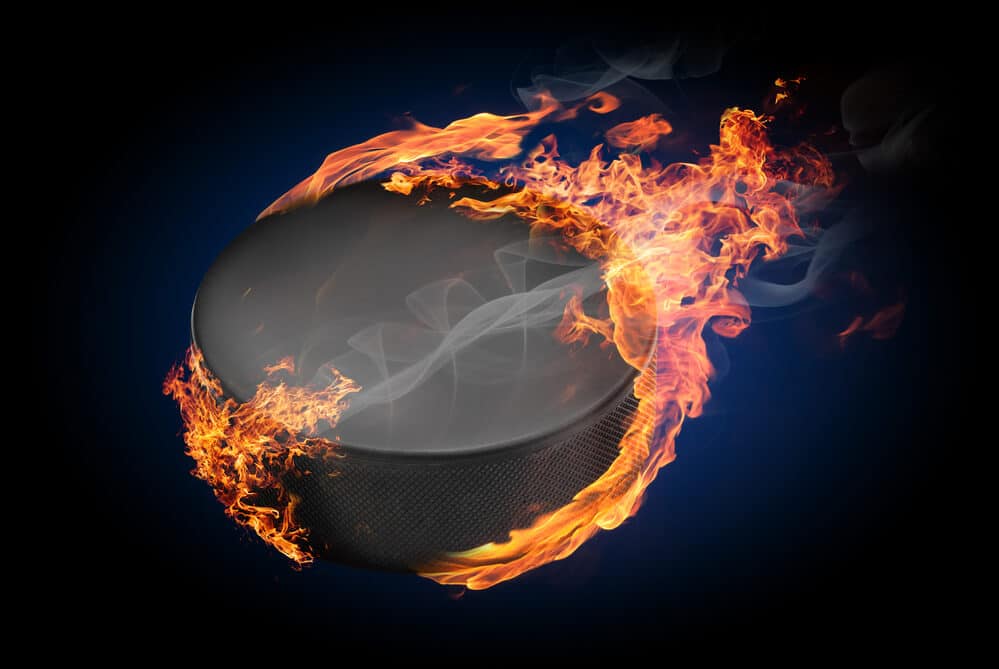
Comparing Plastic vs. Lexan Air Hockey Pucks
Plastic and Lexan pucks each have their unique attributes. Plastic pucks are generally lighter, making them suitable for smaller, home-use air hockey tables. On the other hand, Lexan pucks, which are used in professional games, are heavier and provide a smoother, faster game.
Maintenance and Care: How to Clean Your Air Hockey Pucks
Regular maintenance of air hockey pucks can significantly extend their lifespan. Pucks should be cleaned with warm, soapy water and thoroughly dried to prevent moisture damage. For stubborn grime, a gentle abrasive cleaner can be used. Avoid using harsh chemicals as they can damage the puck.
Safety Precautions: Preventing Air Hockey Puck Injuries
Playing air hockey is generally safe, but it’s possible to get injured if a puck flies off the table. Safety precautions include using pucks of the right weight and size for your table, keeping the play area clear, and wearing protective eyewear when playing competitively.
Understanding the Role of Air Pressure in Air Hockey Puck Movement
Air hockey tables use air blowers to create a cushion of air on which the puck floats. This air cushion reduces friction, allowing the puck to move quickly and smoothly. The right amount of air pressure is crucial to the puck’s movement and overall gameplay.

How Air Hockey Pucks Float: The Science Behind It
The principle behind the floating puck is Bernoulli’s principle. It states that as the speed of a fluid (in this case, air) increases, its pressure decreases. The air hockey table pumps air through tiny holes, creating a thin layer of low-pressure air on which the puck can float.
Air Hockey Pucks for Professional Tournaments: What’s the Difference?
Professional tournament pucks are distinguished by their precise weight, size, and material. As per USAA standards, these pucks are 3.25 inches in diameter, weigh between 42 and 46 grams, and are made from Lexan. They’re designed to offer maximum control, speed, and stability.
Air Hockey Pucks: Color Variations and Their Significance
Puck colors can vary, but professional tournament pucks are typically yellow, red, or green. This isn’t just for aesthetic purposes; these colors are chosen because they stand out against the air hockey table’s surface, making the puck easier to see during high-speed play.
Choosing the Right Air Hockey Pucks for Kids and Beginners
For children and beginners, lighter, smaller pucks are best. These pucks are easier to hit, safer, and better suited to the lower air pressure of smaller tables. As a player’s skills progress, they can move onto larger, heavier pucks.
Air Hockey Puck Tricks: Enhancing Your Game Performance
Mastering certain puck tricks can significantly improve your air hockey performance. These include the “over” (sending the puck over the opponent’s mallet), the “under” (hitting the puck underneath the opponent’s mallet), and the “bank shot” (hitting the puck off the table’s side to change its direction).
Air Hockey Pucks vs. Discs: What’s the Difference?
Air hockey pucks and discs may seem similar, but they have a few key differences. Pucks are thicker, heavier, and are used in traditional air hockey. Discs, on the other hand, are thinner, lighter, and used in a similar game called “disc hockey” or “glide hockey,” which is played on a smooth, non-air table.
In conclusion, air hockey pucks are a crucial part of the game of air hockey, impacting everything from the pace of the game to the skill required to play. By understanding more about the materials, sizes, and weights of pucks, as well as how to maintain them and where to buy them, you can ensure that you have the best possible air hockey experience.

Delving Deeper: Beyond The Basics
The Environmental Impact of Air Hockey Puck Production
Considering the sustainability of our hobbies is an essential part of being a responsible consumer. The production of Lexan polycarbonate resin, the primary material used in air hockey pucks, is energy-intensive and produces greenhouse gases. However, many manufacturers are working towards more sustainable practices, including recycling initiatives and greener manufacturing processes.
The Art of Air Hockey Puck Control
While it might seem like air hockey is all about hitting the puck as hard as you can, the game actually involves a great deal of skill and strategy. Mastering puck control techniques, such as hovering, mallet grip changes, and puck spin control, can significantly enhance your gameplay.
The Future of Air Hockey Pucks: Innovation and Improvements
Innovation doesn’t stop in the realm of air hockey. Pucks with built-in tracking technology, smart pucks that can record scores, and eco-friendly pucks made from sustainable materials are all potential developments we might see in the future. As technology continues to evolve, so too will our beloved game of air hockey.
